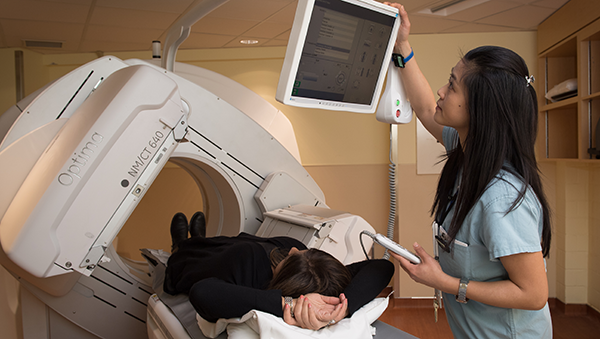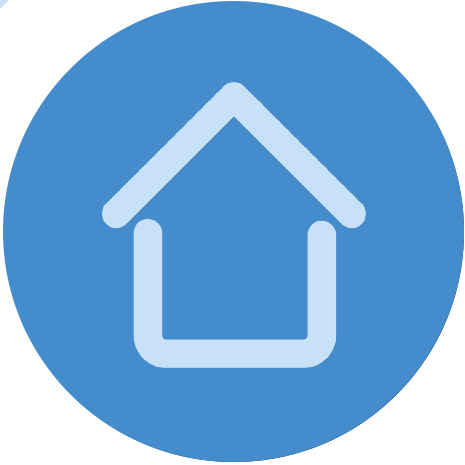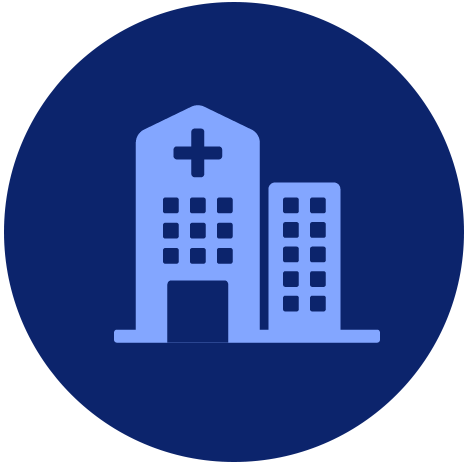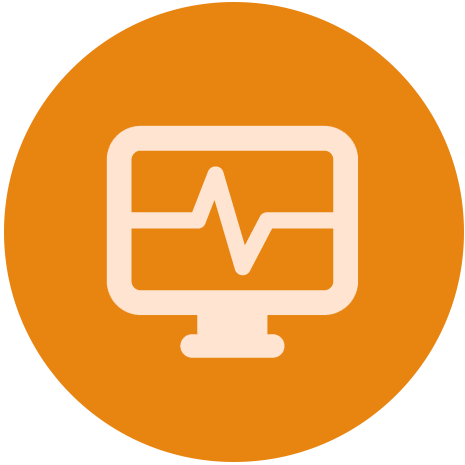Nuclear Medicine & Molecular Imaging
What is nuclear medicine & molecular imaging?
Nuclear medicine and molecular imaging is a technique that uses a radioactive tracer to take images of how organs and different parts of the body function. Radioactive tracers are introduced into the body by injection, swallowing, or inhalation. The amount of tracer used is carefully selected to provide the least amount of radiation exposure to the patient while ensuring an accurate test.
After the tracer is administered, a special camera tracks the path of the tracer as it moves naturally through the body so that a specialist can assess how well the organ, tissue, or bone is functioning.

Nuclear medicine & molecular imaging: what to expect
 Preparing for the test
Preparing for the test
Different tests require different preparations. It’s very important the correct preparation is used for the test to be performed properly. For example, some scans may require you to not eat or drink for several hours before your test. Another test may not have any restrictions.
If you are scheduled to have a nuclear imaging test at Sunnybrook and are not sure of how to prepare for it, please call 416-480-4336.
 On the day of the test
On the day of the test
The test will take approximately 30 minutes to six hours, including preparation, depending on the test required. You may need to return for further assessments.
Please check-in for your appointment at the Bayview Campus (2075 Bayview Ave), A-wing, ground floor, room AG 21.
Our receptionist may ask you to fill out a form about your medical history, medications you may be taking, allergies and any other questions as they relate to your test.
You may be asked to remove any clothing with zippers, clasps or wires that may interfere with the scan. Although not common, you may be asked wear a hospital gown.
 During the test
During the test
Tiny, molecular-sized radioactive tracers will be introduced into the body by injection, swallowing, or inhalation. Typically, you should not experience any side effects from the radioactive tracers.
The technologist will help position you on the examining table under a camera. It is important that you remain still so that the camera can take clear pictures.
The camera will then detect and track the path of the tracer as it moves through your body so that our specialists can assess how well the organ, tissue, or bone is functioning.
Because nuclear medicine and molecular imaging measures how the body functions, these tests usually take longer than others. Most nuclear imaging machines do not give off any radiation so the time you are under the machine does not impact how much you are exposed to radiation.
 After the test
After the test
Generally, you can resume your usual activities and regular diet immediately. Your body will eliminate the tracer naturally; depending on the test, this may be within three to four days or as long as a month. As long as the tracer is inside your body, you may set off security alarms. If you are travelling soon after your test, speak with your doctor to get a letter stating your situation.
The results of your imaging should be available to your referring physician within four to five business days after your test. Your physician will discuss the test results with you.
Your report can also be accessed through MyChart in two to three weeks after your test.
Location and contact
Nuclear medicine
Sunnybrook Health Sciences Centre
2075 Bayview Avenue,
A-wing, ground, room
AG 00
Toronto, ON M4N 3M5
Phone: 416-480-4336
Hours
Monday - Friday: 8:00 a.m. - 4:00 p.m.






